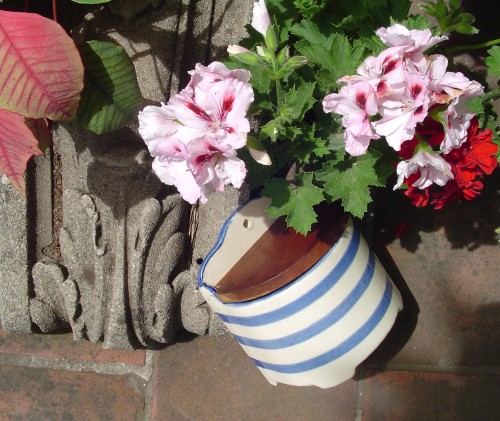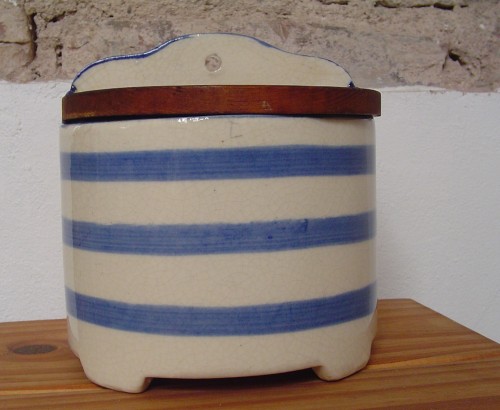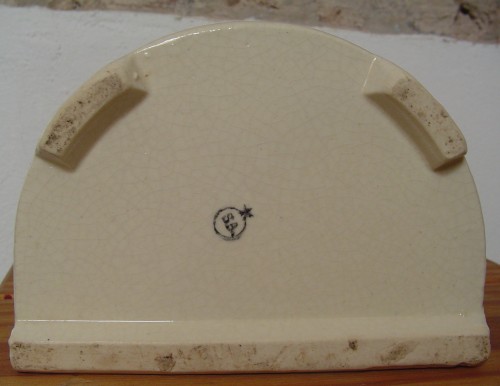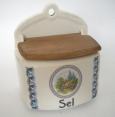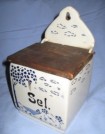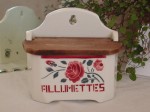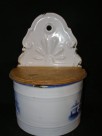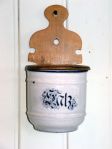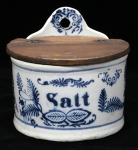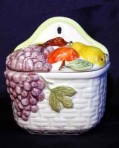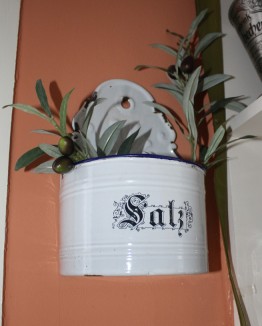

These are two real photo postcards showing the second-class interiors (the dining saloon and the smoke room), of the S.S. Vestris Lamport & Holt Line. The SS Vestris was a steamship, built in 1912 by Workman Clarke & Co. Ltd., Belfast, Ireland. She was accident sinking, on 12 November 1928, with a loss of more than 100 lives.
CATASTROPHE: Vestris
Monday, Nov. 26, 1928
TIME Magazine

Quietly sank the Vestris, a fortnight ago, some 250 miles east of Hampton Roads, in water two miles deep, beyond hope of recovery. There was no collision, no explosion, no hurricane. She was scuttled, perhaps by negligence.
Dead, or missing and probably dead, are in persons. Twenty-two bodies were recovered. The crew fared better than passengers, 155 out of a personnel of 198 having been picked up by rescue ships. Of passengers 60 were saved, 68 perished.
Not one of the 13 children aboard, and only eight of the 33 women, survive.
Hysterical survivors filled the press with stories of leaking lifeboats, faulty tackle, indifference of officers, mutinous and incompetent crew. Capt. William J. Carey went down with his ship; but those who watched him on the bridge, taciturn, deaf to questions and pleas, wonder why he deferred SOS until 20 hours after danger became apparent.
Meanwhile eight investigations were projected or under way.
The Gold Ship. The Lamport & Holt liner Vestris, built in Belfast in 1912 and measuring 495 feet in length, 10,944 tons, plied between New York and Buenos Aires, stopping at the Barbados and way points. Because shipments of gold, sometimes valued at as much as $3,000,000, were often sent on her between Argentine and New York banks, she was referred to as “the Gold Ship.” She was named for Lucia Elizabeth Bartolozzi Vestris, English actress (1797-1856).
Before her last voyage she was overhauled in drydock at Brooklyn. A minor collision in the Erie basin as she left dry-dock did no more than scrape paint. After this she was examined by three U. S. Department of Commerce inspectors, who spent three days in their work and certified her “seaworthy and equipped according to law.” During the inspection every lifeboat was tested; filled with men, lowered to the water and raised again.
On Saturday afternoon, Nov. 10, the Vestris sailed from her pier at Hoboken, with fair weather and calm sea. Yet one passenger, Carlos Quiros, chancellor of the Argentine consulate in New York, bitter in his criticism of the way the Vestris was handled, says: “She had a list when tied up at the pier before sailing. In fact, we could not sleep on Saturday.”
Saturday evening, Captain Carey did not appear in the dining room for dinner. He was already beginning the vigil that ended Monday afternoon.
Man the Pumps. Early Sunday morning the weather began to thicken, and at 9 o’clock the Vestris sprang a leak. Chief Engineer James A. Adams went below, found water pouring in through an ash-discharger valve, also into the engine room where a pipe had given way. Hardly had these been stopped when it was discovered the Vestris was shipping heavy seas through a coal port.
This last leak was on the port side, but water flowed to starboard because the ship was listing to that side. Sunday afternoon a fourth leak was found in the starboard coal bunkers. By 6 o’clock Sunday evening all the pumps were working, and still the water gained. Two more leaks had developed.
At noon Sunday Captain Carey ordered half speed, according to Engineer Adams, alternating from port to starboard engines.
The gale now was driving. The starboard list increased. In the dining saloon, dishes slid from the tables and chairs toppled over. Officers went about with assuring words. The passengers did not know that a number of cased automobiles had gone crashing through a partition in the hold, toward the starboard side, making matters worse.* They did not know that the stokers were working waist-deep in water, that cabin stewards were bailing there with buckets that might as well have been thimbles.
All Sunday Captain Carey was striving to reach by radio the Voltaire, of his own line, bound north and in the approximate locality. Meanwhile, the Voltaire had been instructed to go to aid the laboring Vestris. She could not do so on account of broken propeller and adverse winds.
Beam-ends. By dawn Monday the gale was but a whisper, the sun burst through a sky of scudding rain clouds. But passengers on the starboard side, looking out of their windows, could not see the horizon. “It was like looking down a deep well.” The deck tilted like a barn roof.
At 9 o’clock, Captain Carey, hitherto indifferent to pleas of passengers to “do something,” ordered women and children on deck.
At this time too he sent first general alarm, as far as is known, a C Q radio signal to other ships meaning “everybody listen.” An hour later he sent SOS giving his position. To New York office of Lamport & Holt Line he reported: “During the night developed 32-degree list. Starboard decks under water. Ship lying on beam-ends. Impossible to proceed anywhere. Sea moderately rough.”
U. S. S. Wyoming and several destroyers, as well as various liners, were speeding to the rescue over hundreds of miles. But, 25 miles away, the steamer Montoso, from Porto Rico bound to Boston, kept serenely to her course. She had no radio, did not learn of disaster until she docked.
Lifeboats. On solid land, in Astoria, Anthony J. Lewkowicz, designer of the lifeboat davits and skids with which the Vestris was equipped, gave audience to newspapermen. He declared the lifeboats were unsinkable, the tackle was foolproof. Said he: “With my davits a boat with a full load can be launched safely by one man … in spite of 32-degree list. . . . The average time is 15 seconds.” But lifeboats did capsize and sink; tackle fouled and broke; and some boats, manned by fools or not, took two hours to launch.
At 11:40 a. m. Captain Carey ordered lifeboats lowered. Even now there was no panic among passengers, although several Negro mothers wailed, clutching their babies. Some Negro members of crew became mutinous, plundered sound equipment for their own boats, defied officers and ignored passengers. An officer threatened a raging big buck with his pistol. The Negro seized it and tossed it overboard.
“Women and children first!” cried Captain Carey, haggard and unkempt, in long black coat on the bridge.
Into lifeboats Nos. 2, 4 and 6 on the port side, accordingly, most of the women and children were sent. But the boats caught on plates, would not slide down the ship’s tilted side. A fall gave way and the prow of No. 4 dropped, spilling babies, mothers into the rushing waters. The ponderous arm of a davit broke, pitched into No. 2 as she hung on the side of the Vestris, crushed skulls and arms, smashed through the bottom. Again wail of child and despairing shriek of mother mingled as another boatload was scattered into the grey seethe. Upturned faces blurred, vanished from sight down the long waves.
Frantically the crew struggled to free No. 6 from her wire cables. For two hours they worked without success. When the Vestris nosed under, No. 6, still fast, was dragged down with her; and a third boatload of women and children was strewn upon the sea.
Women and children were first—to drown.
Of other boats on the port side, only Nos. 10 and 14 were picked up by rescuers. On the starboard side, No. 9 was the first lowered. It had been filled by frightened members of the crew. It foundered on reaching the water. Nos. 1, 3, 5 and 13 were found by rescue ships.
Every boat picked up was more or less filled with survivors, from 19 in No. 1 to 43 in No. 3.
As for the motor-driven lifeboat carried by the Vestris and used constantly as a tender, not one word was heard of her.
Man v. Sea. It was 2:30 p. m. when the Vestris lurched on a billow to starboard and rolled under with a gulp, in froth and spume and reeling eddy. A few men, the last on board, sprinted across her horizontal side and dived. Captain Carey watched them, clung to his bridge.
Of the 24 hours that followed, as wretches floundered in tepid waters known to be thick with sharks, Quartermaster Lionel Licorish, flyweight black from Barbados, was hero. To lifeboat No. 14, bobbing on the waves, occupied only by one unconscious man, he swam. Finding no oars he plunged overboard and retrieved some. Then cruising through wreckage he rescued some 20 souls.
The night was stars one hour, rain squalls the next. Across the waste of torn water there shone no lights of a rescuing ship. From time to time, sparingly, flares would be lit in the drifting lifeboats.
A Negro floated on a plank, a clasp knife open in his hand, for sharks or men.
Major Yashio Inouye, military attache of the Japanese embassy at Buenos Aires, dropped his arms, strength forespent in efforts to protect his wife, Mme. Teruko Inouye. Then her strength revived; she held him in her arms for hours, and there he died. So also did Mrs. Norman Batten of Brooklyn support her husband until he died.
But early Tuesday morning a searchlight swept the sea. The rescue ships were now arriving: the American Shipper of the American Merchant Lines, the French tanker Myriam, the North German Lloyd liner Berlin, the battleship Wyoming. Thereafter until Tuesday noon the rescue work proceeded.
Mrs. Clara G. Ball, stewardess, and Paul A. Dana, a passenger, swam around together, jesting to keep awake. They were among the last picked up, at noon. As Dana was taken out of the water, a body floated by! Lazily mouthing one foot was a huge white shark. Chief pantryman Jean Gladianos was hauled out of the sea. Said he: “A girl about nine years old came up alongside of me. I grabbed the little head in the crook of my left arm. She smiled up at me. At last she died. She had black hair.” Mme. Inouye and Mrs. Batten, widows, were taken on board the Wyoming. Safe at last in Manhattan, Hero Licorish made grinning appearances on Palace, Broadway, Hippodrome stages. Nathan Straus, philanthropist, proposed $20,000 fund to reward him, offered $250 subscription himself. Carey. The riddle remained, why was no SOS sent out hours earlier? The answer may be sealed behind the level eyes of Captain Carey. His memory today is dishonored by such epithets as murderer, fool, incompetent, even crook. He was 59 and his record was distinguished. He had been a master of transatlantic vessels since 1914, and was 40 years in the service of the Lamport & Holt Line. During the War he served on transports and supply ships, one of which, the Titian, was torpedoed. He was commodore of his line, and was to have taken command of the Voltaire on his next voyage. Passengers hint that he had orders from his superiors to avoid incurring large salvage fees entailed by S O S. A psychiatrist inferred he was bewildered, mentally paralyzed, in the crisis. A charitable supposition is that, relying on Chief Engineer Adams’s statement that he could keep the Vestris afloat he judged an S O S unnecessary.


Investigations
First to investigate the disaster was the U. S. Department of Justice through District Attorney Tuttle in Manhattan. The first major witness was Chief Officer Frank W. Johnson of the drowned ship. Assigned to the Vestris just before she sailed, he had as part of his duty an inspection of her coal ports to see that they had been closed tight. He testified that he had. entrusted a ship’s carpenter with this duty, not inspected himself.
Chief Engineer Adams testified that as late as eleven a. m. Monday he had reported to Captain Carey that the Vestris’ pumps could keep her afloat another six hours, when Captain Carey expected the U. S. destroyers to arrive.
District Attorney Tuttle commandeered all radio messages exchanged between Captain Carey and his employers.
While the Tuttle inquiry proceeded, other investigations were planned by:
The U. S. Department of Commerce, into its steamship inspection service.
Sanderson & Son, the Lamport & Holt Lines agents.
The British Board of Trade.
The Commerce Committee of the U. S. Senate (Jones, of Washington, chairman).
The Board of New York Insurance Underwriters.
The Central Trades and Labor Council (Manhattan) on a resolution alleging that the Vestris crew was underpaid, incompetent.
The British Parliament.
Effects
Alongside the grisly news columns in the New York Times appeared an advertisement entitled: “The Song of the Sea.” It rhapsodized: “Sail on your way while the sea is singing in liquid, low notes the song of the ages. . . . Listen to the music that mariners love.”
This advertisement was not so incongruous as it seemed at first glance. It was an advertisement of the Fall River Line, whose ships ply through placid Long Island Sound and never far from the New England coast.
What effect the Vestris disaster might have on public confidence in deep-sea voyaging other steamship companies estimated as cheerfully as possible. From their standpoint nothing had changed, unless for the better. The sinking of one ship could not alter the seaworthiness of other ships. If anything, it should tend to make ship inspection, discipline and precautions more thoroughgoing than ever. By the law of averages, another great disaster among all the ships of the world was less likely now than a week before.
A few immediate cancellations and some diminution in passage bookings for a while had to be expected, but the carrying public had faith in the traveling public and in itself. Twelve survivors of the Vestris who at once re-engaged passages for South America were witnesses to the probability that most people are as conscious of life’s risks before something happens as they are afterwards. The Vestris disaster lessened no one’s chances of dying in his bed.
* Heavy machines in large cases constituted most of the cargo of the Vestris. Included were: 650 cases automobiles, 600 shipped by General Motors Co. to Montevideo: 240 cases automobile accessories; 68 cases typewriters: 86 cases cash registers: 31 cases truck chasses: 58 cases tractor parts; 66 tractors: and in varying amounts, railroad materials, furnaces, gas engines, steel office furniture, motorcycles, divers hardware. There was considerable mail, including diplomatic correspondence with U. S. consular agents.

Vestris Inquiry
New York – Photo shows captain William Andrew Bambra, former master of the ill-fated Vestris, as he appeared on the stand at the Federal Inquiry into the disastrous sinking of the Lamport & Holt Linen.
“He said Captain Carey, whom he had known for many years, was an excellent seaman, who had a clean record and fine reputation. A number of questions were put to him by Captain Jessup as to how he would act in circumstances similar to those in which Captain Carey found himself. Asked how many tons of water would have been in the ship to give her a list of 32 deg., he said hundreds of tons, possibly a thousand tons. Captain Bambra differed from previous witnesses about the amount of cargo and stores carried by the Vestris.”
Read Full Post »







































































































































































